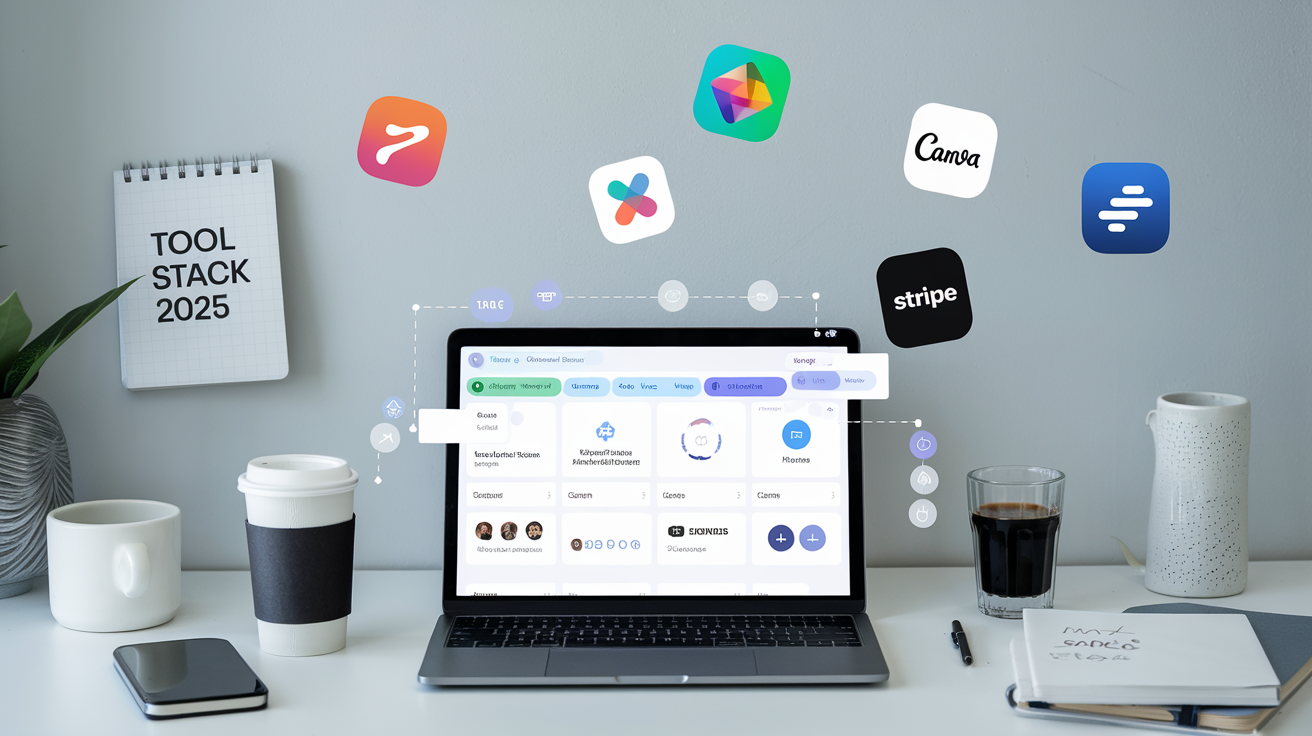Selling Templates on Etsy vs Your Own Website: Pros & Cons
Are you a creative entrepreneur wondering where to sell your digital templates? This decision could make or break your online business success. With the digital template market booming—worth over $8 billion globally—choosing the right platform is more crucial than ever.
Whether you’re designing wedding invitations, social media graphics, or business templates, you’re facing a critical crossroads. Should you leverage Etsy’s massive built-in audience or build your own website for complete control? Each approach offers distinct advantages and challenges that can dramatically impact your profits, growth potential, and long-term business sustainability.
In this comprehensive guide, we’ll break down everything you need to know about selling templates on Etsy versus your own website. You’ll discover the hidden costs, profit margins, marketing strategies, and real-world scenarios that will help you make the smartest decision for your template business. By the end, you’ll have a clear roadmap for maximizing your template sales and building a thriving digital business.
Understanding the Digital Template Market Landscape
The digital template industry has exploded in recent years, driven by the rise of DIY culture, remote work, and social media marketing. Small businesses, entrepreneurs, and individuals are constantly seeking professionally designed templates to save time and money while maintaining a polished appearance.
Templates span countless categories: wedding invitations, business cards, social media posts, resume designs, planners, logos, website themes, and marketing materials. This diversity creates opportunities for designers with various skill levels and interests to find profitable niches.
Market Size and Growth Potential
The global digital template market continues expanding rapidly, with projections showing sustained growth through 2030. This growth is fueled by increasing digitalization, the gig economy, and the demand for affordable design solutions among small businesses and individuals.
Social media platforms like Instagram, Pinterest, and TikTok have created unprecedented demand for eye-catching visual content. Business owners need constant fresh graphics but lack the time or skills to create them from scratch. This gap represents a massive opportunity for template creators.
Understanding market trends helps you position your templates effectively, whether you choose Etsy, your own website, or both platforms. The key is recognizing that different platforms serve different customer segments and purchasing behaviors.
Selling Templates on Etsy: The Complete Breakdown
Etsy has become synonymous with handmade and creative digital products, making it a natural destination for template shoppers. With over 90 million active buyers worldwide, Etsy offers immediate access to a massive audience actively searching for creative digital solutions.
The Major Advantages of Etsy
Instant Traffic and Built-in Audience: Etsy’s greatest strength is its established customer base. Millions of people visit Etsy daily specifically to find creative products and templates. You don’t need to drive traffic—customers are already there, searching for exactly what you offer.
Trust and Credibility: Etsy’s reputation provides instant credibility for new sellers. Customers trust the platform’s payment processing, refund policies, and seller vetting process. This trust translates into higher conversion rates, especially for new businesses without established reputations.
Simple Setup Process: Getting started on Etsy is remarkably straightforward. You can have your shop up and running within hours, complete with payment processing, digital delivery systems, and customer support infrastructure. The platform handles all technical aspects, letting you focus on creating and marketing.
SEO Benefits: Etsy products appear in Google search results, providing additional visibility beyond the platform itself. Well-optimized Etsy listings can rank for relevant keywords, bringing in organic traffic from search engines.
Customer Support Infrastructure: Etsy provides comprehensive customer support for both buyers and sellers. They handle payment disputes, technical issues, and policy questions, reducing your administrative burden.
The Hidden Costs and Disadvantages
Listing Fees and Transaction Costs: Etsy charges $0.20 per listing plus 6.5% of each transaction, including shipping costs. Additional fees apply for payment processing (around 3% + $0.25) and advertising. These fees can significantly impact your profit margins, especially on lower-priced items.
Intense Competition: Success on Etsy requires standing out among thousands of similar products. Popular template categories are saturated with established sellers, making it challenging for newcomers to gain visibility without significant marketing investment.
Limited Customization Options: Etsy shops offer minimal branding opportunities. Your storefront looks similar to every other Etsy shop, making it difficult to build a distinctive brand identity. You’re essentially borrowing Etsy’s credibility rather than building your own.
Platform Dependency Risk: Etsy can change policies, fee structures, or algorithms at any time. Sellers have reported sudden drops in visibility due to algorithm changes or policy updates. Your business success depends entirely on maintaining good standing with a platform you don’t control.
Customer Relationship Limitations: Etsy restricts direct communication with customers and limits your ability to build email lists or retarget buyers. You’re building Etsy’s customer base rather than your own, which limits long-term growth potential.
Etsy Success Strategies
Keyword Optimization: Research popular search terms in your niche and incorporate them naturally into your product titles, descriptions, and tags. Use tools like Marmalead or eRank to identify high-traffic, low-competition keywords.
High-Quality Product Photos: Invest in professional-looking product mockups and lifestyle images. Visual presentation is crucial on Etsy, where customers can’t physically examine products before purchase. Show your templates in use and highlight key features clearly.
Competitive Pricing Research: Study successful competitors in your niche to understand pricing strategies. Consider your costs, time investment, and desired profit margins when setting prices. Don’t automatically choose the lowest price—quality templates can command premium pricing.
Customer Service Excellence: Respond quickly to customer inquiries and resolve issues promptly. Positive reviews are crucial for Etsy success, and excellent customer service is the best way to earn them. Consider offering slight customizations or bonus materials to exceed expectations.
Building Your Own Website: The Independent Approach
Creating your own website for selling templates offers complete control over your business but requires significantly more effort and investment. This approach appeals to entrepreneurs who want to build lasting brands and maximize long-term profitability.
The Compelling Advantages of Your Own Website
Complete Control and Ownership: Your website is your digital real estate. You control the design, user experience, pricing, policies, and customer relationships. No external platform can suddenly change rules or shut down your business.
Higher Profit Margins: Without platform fees, you keep more of each sale. While you’ll have website hosting and payment processing costs, these are typically much lower than Etsy’s fees, especially as your sales volume increases.
Brand Building Opportunities: Your website allows complete creative control over branding, messaging, and customer experience. You can create a unique brand identity that stands out in the marketplace and builds customer loyalty.
Customer Data Ownership: Collect email addresses, purchase history, and customer preferences to build valuable marketing databases. This data enables targeted marketing campaigns, personalized recommendations, and lifetime value optimization.
Unlimited Growth Potential: Your website can evolve with your business. Add new product lines, create subscription services, offer custom design services, or expand into related markets without platform restrictions.
Direct Customer Relationships: Communicate directly with customers through email marketing, social media, and customer service channels. Build relationships that extend beyond individual transactions and create repeat customers.
The Significant Challenges and Costs
Technical Complexity: Building and maintaining a website requires technical skills or hiring professionals. You’ll need to handle hosting, security, updates, and troubleshooting. Technical issues can directly impact sales and customer satisfaction.
Higher Upfront Investment: Website development, hosting, domain registration, email marketing tools, and payment processing setup require initial investment. Professional design and development can cost thousands of dollars.
Traffic Generation Responsibility: Unlike Etsy’s built-in audience, your website starts with zero visitors. You must invest time and money in SEO, content marketing, social media, advertising, or other traffic generation strategies.
Customer Acquisition Costs: Driving qualified traffic to your website typically costs more than selling on established marketplaces. You’ll need budget for advertising, content creation, and marketing tools.
Trust Building Challenges: New websites lack the credibility that established platforms provide. You must work harder to convince customers to trust your brand and complete purchases.
Ongoing Maintenance Requirements: Websites require regular updates, security monitoring, backup management, and performance optimization. These tasks consume time and resources that could be spent on product creation.
Essential Website Success Strategies
Professional Design and User Experience: Invest in clean, professional design that builds trust and makes purchasing easy. Ensure your site loads quickly, works on mobile devices, and provides clear navigation.
Search Engine Optimization: Optimize your website for search engines to attract organic traffic. Research keywords your target customers use and create content that addresses their needs and questions.
Content Marketing: Create valuable blog content, tutorials, and resources that attract potential customers. Share design tips, showcase customer success stories, and establish yourself as an expert in your niche.
Email Marketing: Build an email list from day one. Offer free templates, design tips, or exclusive discounts in exchange for email addresses. Use email marketing to nurture relationships and drive repeat sales.
Social Media Marketing: Use platforms like Instagram, Pinterest, and TikTok to showcase your work and drive traffic to your website. Visual platforms are particularly effective for template creators.
Financial Comparison: Etsy vs Your Own Website
Understanding the financial implications of each platform is crucial for making an informed decision. Let’s examine the real costs and profit potential of both approaches.
Etsy Financial Breakdown
Etsy Fees Structure: For a $20 template sale, you’ll pay approximately $0.20 listing fee, $1.30 transaction fee (6.5%), and $0.85 payment processing fee (3% + $0.25). Total fees: $2.35, leaving you with $17.65 (88.25% of sale price).
Hidden Costs: Etsy Ads can consume 10-20% of revenue for competitive visibility. Factor in time spent on SEO optimization, customer service, and product photography. Many successful Etsy sellers spend 20-30% of revenue on advertising and optimization.
Volume Considerations: Higher-volume sellers may qualify for reduced payment processing fees, but transaction fees remain constant. As your business grows, these percentage-based fees become increasingly expensive.
Realistic Profit Margins: After all fees and advertising costs, successful Etsy template sellers typically retain 60-70% of gross revenue. This assumes efficient operations and reasonable advertising spend.
Your Website Financial Breakdown
Fixed Costs: Website hosting ($10-50/month), domain registration ($10-15/year), email marketing tools ($30-300/month), and payment processing (2.9% + $0.30 per transaction) represent your primary ongoing expenses.
Variable Costs: Marketing and advertising expenses vary widely based on your strategies. SEO-focused approaches may cost less but require more time. Paid advertising can be expensive but provides faster results.
Profit Potential: Without platform fees, you keep more of each sale. A $20 template sale might cost $0.88 in payment processing and minimal hosting costs, leaving you with $19.12 (95.6% of sale price).
Investment Payback: Initial website development costs ($500-5000+) must be recouped through sales. Factor in ongoing marketing expenses and time investment when calculating true profitability.
Marketing Strategies for Each Platform
Success on either platform requires understanding how customers discover and purchase templates. Marketing strategies differ significantly between Etsy and your own website.
Etsy Marketing Tactics
Internal SEO Optimization: Master Etsy’s search algorithm by researching relevant keywords and incorporating them naturally into product titles, descriptions, and tags. Use all available tag slots and update listings regularly to maintain visibility.
Etsy Ads Investment: Allocate 15-25% of revenue to Etsy Ads for competitive categories. Start with automatic campaigns to identify high-performing keywords, then create manual campaigns for better control.
Social Media Integration: Use Instagram, Pinterest, and TikTok to showcase your templates and drive traffic to your Etsy shop. Focus on visual content that demonstrates your templates’ versatility and quality.
Cross-Promotion Strategies: Encourage customers to favorite your shop and follow you for updates. Create collections that group related templates together and encourage multiple purchases.
Customer Review Management: Prioritize earning five-star reviews through excellent products and customer service. Respond to all reviews professionally and address any issues promptly.
Website Marketing Approaches
Content Marketing: Create valuable blog content that attracts potential customers through search engines. Write tutorials, design tips, and industry insights that establish your expertise and drive organic traffic.
Email Marketing Campaigns: Build and nurture an email list through lead magnets, newsletters, and promotional campaigns. Segment your list based on customer interests and purchase history for targeted marketing.
Social Media Advertising: Use Facebook, Instagram, and Pinterest ads to reach specific audiences interested in your template categories. Start with small budgets and scale successful campaigns.
Search Engine Optimization: Optimize your website for search engines to attract organic traffic. Focus on long-tail keywords related to your template categories and target audience needs.
Influencer Partnerships: Collaborate with bloggers, business coaches, and social media influencers who serve your target market. Offer free templates in exchange for honest reviews and social media promotion.
Long-term Business Growth Considerations
Your platform choice significantly impacts your business’s long-term growth potential and sustainability. Consider these factors when planning your template business strategy.
Etsy Growth Limitations
Platform Dependency: Etsy’s success depends on maintaining good standing with their policies and algorithms. Changes beyond your control can dramatically impact your business overnight.
Limited Scalability: Etsy’s fee structure becomes increasingly expensive as your sales volume grows. High-volume sellers often struggle with profitability due to percentage-based fees.
Brand Development Challenges: Building a recognizable brand on Etsy is difficult due to platform limitations. Customers often remember “Etsy” rather than your specific shop name.
Customer Retention Issues: Etsy’s structure makes it difficult to build lasting customer relationships. Repeat customers might not find your shop again or may purchase from competitors instead.
Website Growth Potential
Unlimited Expansion: Your website can evolve with your business needs. Add new product lines, create membership sites, offer custom services, or expand into related markets without platform restrictions.
Brand Equity Building: Owning your website allows you to build valuable brand equity over time. A strong brand can command premium pricing and create customer loyalty.
Customer Lifetime Value: Direct customer relationships enable you to maximize lifetime value through repeat purchases, upsells, and referrals. This creates more sustainable and profitable business models.
Exit Strategy Options: A successful website-based business has more exit options than an Etsy shop. You can sell your website, customer database, and brand for potentially significant returns.
Hybrid Approach: Using Both Platforms Strategically
Many successful template creators use both Etsy and their own website strategically, leveraging each platform’s strengths while mitigating weaknesses.
Strategic Multi-Platform Benefits
Risk Diversification: Spreading your business across multiple platforms reduces dependency on any single channel. If one platform experiences issues, your other channels can maintain revenue.
Audience Segmentation: Different platforms attract different customer types. Etsy customers often seek affordable, ready-made solutions, while website visitors may be interested in premium or custom options.
Testing and Optimization: Use Etsy to test new products and identify bestsellers, then feature successful items prominently on your website. This approach minimizes risk while maximizing opportunities.
Cross-Platform Promotion: Use your Etsy presence to drive traffic to your website and vice versa. Offer exclusive products or discounts on each platform to encourage cross-platform engagement.
Implementation Strategies
Start with Etsy: Begin selling on Etsy to validate your products and generate initial revenue. Use this income to fund your website development and marketing efforts.
Gradual Website Transition: As your Etsy sales grow, reinvest profits into building your website. Start with a simple site and gradually add features and functionality.
Differentiated Pricing: Consider offering different pricing or product bundles on each platform. Your website might feature premium packages while Etsy focuses on individual templates.
Customer Journey Mapping: Create clear paths for customers to move from Etsy to your website. Offer incentives for joining your email list or following your social media accounts.
Making Your Decision: Key Factors to Consider
Choosing between Etsy and your own website depends on several personal and business factors. Consider these elements carefully when making your decision.
Assess Your Current Situation
Technical Skills: Honestly evaluate your technical abilities and willingness to learn. Website management requires ongoing technical attention that some creators prefer to avoid.
Available Budget: Calculate your available startup budget and ongoing marketing resources. Websites require higher upfront investment but potentially offer better long-term returns.
Time Commitment: Consider how much time you can dedicate to marketing and business development. Etsy requires less initial setup but ongoing optimization for success.
Risk Tolerance: Evaluate your comfort level with business risk. Etsy offers more predictable but limited growth, while websites offer higher potential but greater uncertainty.
Define Your Business Goals
Short-term vs Long-term Focus: If you need immediate income, Etsy might be preferable. If you’re building a long-term business, your website offers more growth potential.
Income Expectations: Set realistic income goals and understand how each platform can help you achieve them. Consider both immediate earning potential and long-term profitability.
Brand Aspirations: Determine whether building a recognizable brand is important to you. Strong brand desires favor website development over platform dependency.
Growth Ambitions: Consider your business expansion plans. Websites accommodate growth and diversification better than platform-based businesses.
Real-World Success Stories and Case Studies
Learning from successful template creators can provide valuable insights into effective strategies for both platforms.
Etsy Success Examples
Many template creators have built six-figure businesses on Etsy by focusing on specific niches and maintaining consistent quality. These sellers typically invest heavily in SEO optimization, customer service, and product photography.
Successful Etsy sellers often create comprehensive template packages that encourage larger purchases. They focus on trending categories like wedding planning, social media templates, and business stationery.
The most successful Etsy template sellers treat their shops like professional businesses, investing in professional photography, detailed product descriptions, and responsive customer service.
Website Success Stories
Independent template creators with their own websites often start with smaller customer bases but achieve higher per-customer value. They build loyal followings through content marketing and email campaigns.
Successful website owners frequently expand beyond templates into related services like custom design, coaching, or digital marketing. This diversification creates multiple revenue streams and reduces business risk.
Many website-based template businesses eventually become acquisition targets for larger companies, providing exit opportunities that platform-based businesses rarely achieve.
Your Next Steps: Creating Your Template Business Strategy
After weighing all factors, you’re ready to make an informed decision about your template selling platform. Here’s your action plan for moving forward successfully.
If You Choose Etsy
Immediate Actions: Set up your Etsy shop with professional branding, high-quality product photos, and optimized listings. Research successful competitors and identify gaps in their offerings.
First Month Goals: Launch with 10-20 template designs, focusing on one specific niche. Invest in Etsy Ads to boost initial visibility and gather customer feedback.
Growth Strategy: Gradually expand your product line based on customer demand and seasonal trends. Build your social media presence to drive external traffic to your Etsy shop.
If You Choose Your Own Website
Planning Phase: Define your brand identity, target audience, and unique value proposition. Research website platforms like Shopify, WordPress, or Squarespace based on your technical skills and budget.
Development Phase: Create your website with professional design, clear navigation, and secure payment processing. Set up email marketing automation and social media accounts.
Launch Strategy: Start with a focused product line and gradually expand. Invest in content marketing and SEO to build organic traffic over time.
If You Choose Both Platforms
Phase 1: Start with Etsy to validate your products and generate initial revenue. Use this income to fund your website development.
Phase 2: Launch your website once you’ve established successful products on Etsy. Focus on driving your best customers to your website through incentives and superior offerings.
Phase 3: Optimize both platforms for their strengths. Use Etsy for customer acquisition and your website for relationship building and premium sales.
Conclusion: Building Your Template Empire
The choice between selling templates on Etsy versus your own website isn’t just about where to list your products—it’s about defining your business strategy and growth trajectory. Both platforms offer legitimate paths to success, but they require different approaches, investments, and expectations.
Etsy provides the fastest path to initial sales with its built-in audience and established trust. It’s ideal for creators who want to test the market, prefer simplicity, or need immediate income. However, platform dependency and fee structures can limit long-term growth and profitability.
Your own website offers maximum control and growth potential but requires significant time, money, and effort to build successfully. It’s perfect for creators with long-term vision, technical skills, and patience to build sustainable businesses.
The hybrid approach combines the best of both worlds, using Etsy for initial validation and audience building while developing your website for long-term growth. This strategy requires more work but offers the greatest potential for success.
Remember that success in the template business isn’t just about choosing the right platform—it’s about creating exceptional products, understanding your customers, and consistently delivering value. Whether you choose Etsy, your own website, or both, focus on building genuine relationships with customers who will become advocates for your brand.
The digital template market will continue growing, creating opportunities for creative entrepreneurs who understand their customers and deliver solutions that make their lives easier. Your success depends not on finding the perfect platform, but on executing your chosen strategy with dedication, creativity, and customer focus.
Start where you are, with what you have, and grow from there. The template business you build today could become the foundation for a thriving creative empire tomorrow. The only wrong choice is not starting at all.






